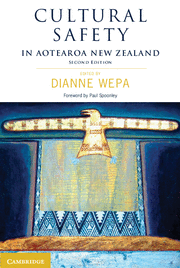Cultural safety and Self-compassion – is it time to forgive ourselves?
International Year of the Nurse and the Midwife and World Health Day 2020 provides a wonderful opportunity to raise the profile of nurses and midwives. As a significant workforce, nurses and midwives’ ability to maintain a balance between caring for others and themselves has led me to consider Self-compassion as a missing component in the process of healthcare delivery.
 Cultural Safety in Aotearoa New Zealand provides a body of knowledge, both theoretical and practical, for educators and students to make meaningful changes to patients and families. Developed in the 1980s by Māori nurses, cultural safety maintains a focus on three foundation components; being regardful of difference, social justice and shifting power to the receiver of care. The third element, where the lived experience of patients determines whether or not a nurse or midwife is safe to attend to their cultural needs can be considered problematic with cultural safety (Wepa, 2001). Focusing on the patient’s culture to the detriment of the healthcare worker’s own culture can result in compassion fatigue. The negative cost of caring, where health workers exhibit numbness, feelings of helplessness and withdrawal is a perennial issue worldwide and pre-dates cultural safety. I have considered compassion fatigue to be a growing area of concern, however which requires a fresh perspective. My colleague Professor Mary Steen recommended a developing area called self-compassion.
Cultural Safety in Aotearoa New Zealand provides a body of knowledge, both theoretical and practical, for educators and students to make meaningful changes to patients and families. Developed in the 1980s by Māori nurses, cultural safety maintains a focus on three foundation components; being regardful of difference, social justice and shifting power to the receiver of care. The third element, where the lived experience of patients determines whether or not a nurse or midwife is safe to attend to their cultural needs can be considered problematic with cultural safety (Wepa, 2001). Focusing on the patient’s culture to the detriment of the healthcare worker’s own culture can result in compassion fatigue. The negative cost of caring, where health workers exhibit numbness, feelings of helplessness and withdrawal is a perennial issue worldwide and pre-dates cultural safety. I have considered compassion fatigue to be a growing area of concern, however which requires a fresh perspective. My colleague Professor Mary Steen recommended a developing area called self-compassion.
Developed by Dr Kristin Neff, self-compassion involves three interrelated elements: self-kindness, common humanity and mindfulness. Self-compassion requires a person to acknowledge when something is difficult and to become comfortable with being uncomfortable. All too often in healthcare, we believe that our own culture, values and beliefs are placed to one side. This is not the intention of cultural safety; however, one can interpret providing culturally safe care to translate as putting others before ourselves.

The metaphor of a sailboat is provided to explain the interconnectedness between cultural safety and self-compassion. The hull of the boat is solid, firm and often hidden beneath the water line. The hull represents our values and culture which tend to be unconscious yet are powerful as they drive our behaviour just like the hull drives the boat.
Our beliefs are represented by the sail. They can be changeable from one day to the other. One day we believe that we are full of energy to do our jobs, the next we can hardly get out of bed. The mast represents self-compassion. Without the mast, the sail and the hull are not connected and cannot enable the boat to move. Self-compassion connects our values, beliefs and culture and allows us to be reminded of who we are, who we serve and ultimately to be kind to ourselves.
In conclusion, cultural safety is a gift from Māori nurses to the world of nurses and midwives. The founding concepts of being regardful of difference, social justice and shifting power to the receiver of care were never intended to relegate the values, beliefs and culture of the nurse or midwife. As we celebrate World Health Day 2020 each of us may want to consider being kinder to ourselves as well as others; at least for a day.
Programme Director & Lecturer, University of South Australia
Cultural Safety in Aotearoa New Zealand presents a range of theoretical and practice-based perspectives adopted by experienced educators active in cultural safety education. The book is edited by Dianne Wepa.





